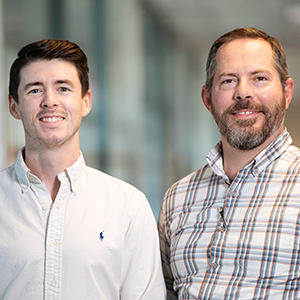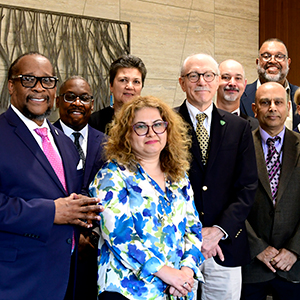Engaging communities in research that supports environmental justice took center stage in a March 22 webinar and a review paper(https://ehp.niehs.nih.gov/doi/10.1289/EHP6274) published Feb. 16, both supported by NIEHS.
The webinar was part of a series hosted by the collaborative Centers of Excellence on Environmental Health Disparities Research (EHD Centers). The review article, published in the NIEHS-affiliated journal Environmental Health Perspectives, was funded in part by the institute’s Superfund Research Program (SRP).
The Environmental Factor highlights these activities as part of its series on racial equity. For more on environmental justice in this issue, check out the Director’s Corner.
 This article is part of a monthly series focused on NIEHS efforts to address racial inequities and promote racial justice. (Image courtesy of NIEHS)
This article is part of a monthly series focused on NIEHS efforts to address racial inequities and promote racial justice. (Image courtesy of NIEHS)“The webinars raise awareness of the research, training, and community engagement accomplishments at the EHD Centers,” said Liam O'Fallon, a health specialist in the NIEHS Population Health Branch. “Through this series we also seek to showcase the work of early stage investigators at the centers.” (See sidebar for more about the event.)
 O’Fallon directs the NIEHS Partnerships for Environmental Public Health and oversees community-based participatory research program grants. (Photo courtesy of Steve McCaw / NIEHS)
O’Fallon directs the NIEHS Partnerships for Environmental Public Health and oversees community-based participatory research program grants. (Photo courtesy of Steve McCaw / NIEHS)Since 2015, NIEHS, the National Institute on Minority Health and Health Disparities (NIMHD), and the U.S. Environmental Protection Agency (EPA) have supported the EHD Centers, to encourage research on disease conditions that significantly burden populations with health disparities or low socioeconomic status. In 2020, NIEHS, NIMHD, and the National Institute of Child Health and Human Development partnered to support three new EHD Centers.
Brittany Trottier, an SRP health specialist, commented on the review paper. “The authors’ recommendations aim to maximize benefits and minimize harms for EJ [environmental justice] communities, as well as enhance scientific rigor in participatory research,” she said. “Because environmental injustices persist worldwide, environmental health researchers have a unique opportunity to join and support EJ communities in shared struggle.”
Participatory research holds promise
The review article was written by Leona Davis and Monica Ramirez-Andreotta, Ph.D., both from the University of Arizona. According to the article, environmental pollution disproportionately affects poor communities and communities of color. The authors define such EJ communities as those at risk of or experiencing harm due to environmental injustice or environmental racism.
“Conventional health intervention … strategies have largely failed to mitigate the sources of environmental health risk for EJ communities,” the authors wrote. But in recent decades, a new generation of researchers has emerged who are committed to partnering with EJ communities. Ample evidence indicates that such participatory research improves both research quality and community understanding of health risks and behaviors.
Keys to catalyzing change
Davis and Ramirez-Andreotta conducted a literature search to pinpoint features of participatory research that promoted structural change in EJ communities. According to the authors, structural change affects health determinants such as zoning, economic, or environmental policies and enforcement.
Out of 154 case studies they examined, only 26 resulted in a structural change outcome. The authors reported that participatory research with EJ communities may be more likely to result in structural change when three conditions are met.
- Community members should hold formal leadership roles.
- The project design should include decision-makers and policy goals.
- Long-term partnerships should be sustained through multiple funding mechanisms.
 Trottier serves as the lead for SRP community engagement activities. (Photo courtesy of Steve McCaw / NIEHS)
Trottier serves as the lead for SRP community engagement activities. (Photo courtesy of Steve McCaw / NIEHS)Target structural change
“Persistent cultural disconnects, trust barriers, and real structural inequity may prevent academics from establishing with EJ communities equitable research partnerships that achieve structural outcomes,” Trottier observed.
The authors suggested that participatory research projects should set structural change as a goal. In addition, they recommended further development and testing of community-centered evaluation tools to assess community benefit and structural change. Finally, they proposed bridging the academic-community gap by hiring faculty who are members of EJ communities.
“The article does a nice job of outlining the opportunities and challenges of addressing EJ issues through community-engaged research,” O’Fallon said. “The authors put forward strong evidence that when done properly, community-engaged research can be a powerful tool to produce community-informed environmental health data that can contribute to structural change to benefit EJ communities.”
Citation: Davis LF, Ramirez-Andreotta MD. 2021. Participatory research for environmental justice: a critical interpretive synthesis. Environ Health Perspect 129(2):26001.










